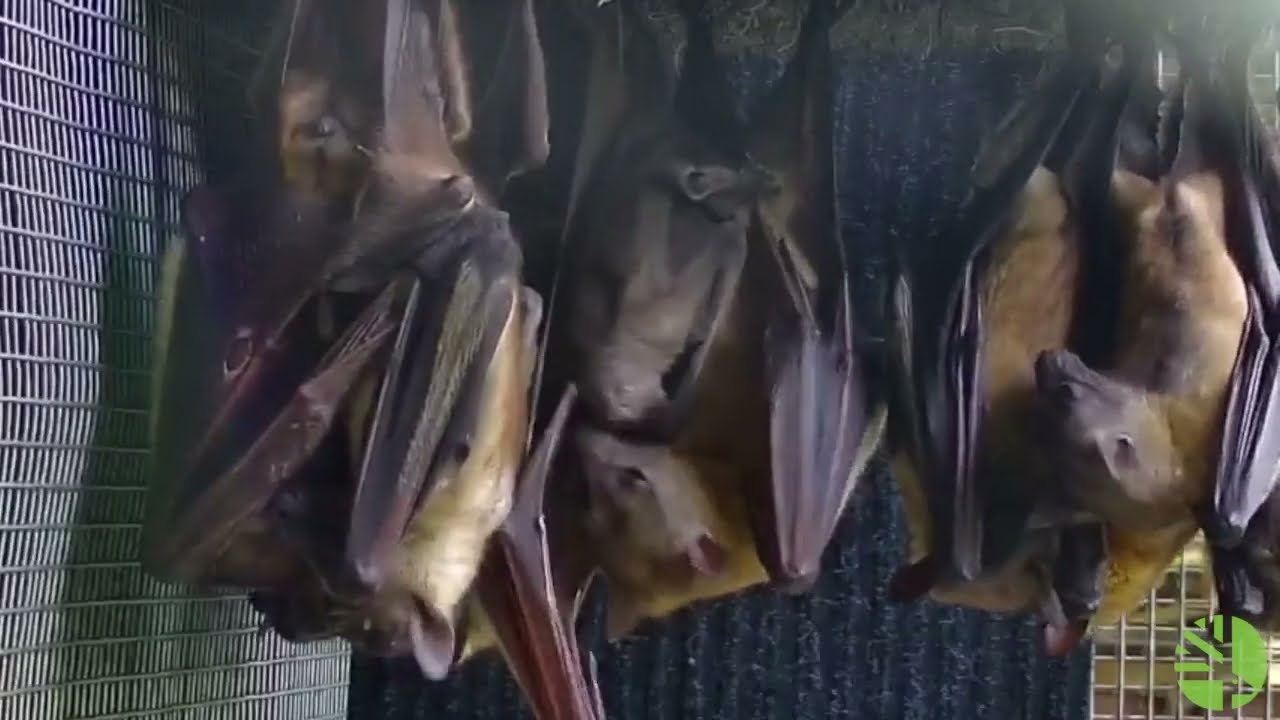Summary:
1. Meet Pumpkin, the Straw Coloured Fruit Bat Pup, born on October 4.
2. The Wildlife Care Team cannot identify Pumpkin’s sex or confirm their parents.
3. Straw-coloured fruit bats are listed as Near Threatened, and the Toronto Zoo is actively working towards their conservation.
4. Pumpkin and the rest of the bat colony can be viewed in the African Rainforest Habitat and online at @zoolife.tv.
There’s a new pumpkin in the patch! And no, I’m not talking about the traditional Halloween decorations. At the Toronto Zoo, a little pup has recently joined the bat colony, and its autumn-time entrance has earned it the fitting name of Pumpkin. Born on October 4, this adorable baby is nearly one month old and already capturing the hearts of visitors and caretakers alike.
As with many newborn mammals, determining the sex of the bat pup is challenging for the Wildlife Care Team. It’s only through careful observation from a distance that Keepers will eventually be able to discern whether Pumpkin is a boy or girl. Additionally, pinpointing Pumpkin’s parents remains a mystery at this stage. Nonetheless, the little one is settled under its mother’s wing, receiving the warmth and protection all young creatures need.
In the coming weeks, Pumpkin will become more active, honing its flying skills by practicing flapping its tiny wings. These exercises are vital for building the necessary muscles required for future flights. For now, though, Pumpkin’s main focus is growing stronger under the careful watch of its mother and keepers.
The Straw-coloured fruit bat, to which Pumpkin belongs, is designated as Near Threatened by the International Union for Conservation of Nature (IUCN). To contribute to the conservation of this species, the Toronto Zoo actively participates in the African fruit bat Species Survival Plan® initiated by the Association of Zoos and Aquariums (AZA). The ultimate goal is to establish an autonomous group of straw-colored fruit bats and ultimately increase their population within the Zoo. This is why you may have noticed some changes in the bat habitat during your recent visits.
Previously housed in the ‘Caves and Burrows’ habitat, the female and castrated male bats have been relocated to a larger aviary above the Ibis habitat in the African Rainforest Pavilion. This move offers several benefits, such as a more natural light cycle, access to additional flight space, and enhanced visibility for the public. By creating an environment that closely mimics their natural habitat, the Zoo aims to provide the best possible care and well-being for these magnificent creatures.
If you’re eager to glimpse Pumpkin and the rest of the bat colony, head over to the African Rainforest Habitat during your visit to the Toronto Zoo. You can also observe their captivating activities online at @zoolife.tv. For the best chances of witnessing these fascinating creatures, plan your visit around dawn or dusk when they are most active, typically starting around 4:00 pm…….. during this time of the year.
Straw-coloured fruit bats, including Pumpkin, play a significant role in our ecosystem. They are essential pollinators, spreading seeds as they feed on the nectar of various plants. By helping to ensure the survival of these bats, the Toronto Zoo is not only contributing to their species’ preservation but also bolstering the health and diversity of our environment.
So, next time you stroll through the Toronto Zoo, don’t forget to stop at the African Rainforest Habitat to say hello to Pumpkin and the rest of the bat colony. Their presence reminds us of the beauty and importance of our world’s wildlife, and the efforts to protect and conserve these wonderful creatures are truly inspiring. Embrace the opportunity to witness nature’s wonders up close and personal, and let Pumpkin’s adorable antics bring a smile as you marvel at the magic of the animal kingdom.
*****
Source Description
There’s a new pumpkin in the patch 🎃
Born on October 4, this little pup is almost one month old and has been appropriately named ‘Pumpkin’ in Hohonorf, their autumn-time entrance to our bat colony 🎃
The Wildlife Care Team won’t be able to identify the sex until they are much older, as Keepers keep an eye on the pup and the rest of the colony from a distance. Due to this, the team also can’t confirm the pup’s parents. However, the little ones spend their time under their mother’s wing. In a few weeks, we’ll see the baby becoming more active and practicing flapping its wings, which builds the muscles needed for flight.
Straw-colored fruit bats are listed as Near Threatened by the IUCN, and the Toronto Zoo participates in the AZA’s African fruit bat Species Survival Plan® to have an autonomous group that increases the population at the Zoo. This is why you may have noticed on your most recent visits the female and castrated male bats previously viewed in our former ‘Caves and Burrows’ habitat (now transitioned to a Multi-Faith Space) were moved to a larger aviary above the Ibis habitat in the African Rainforest Pavilion, where the intact males have lived for several years. This location provides a more natural light cycle, access to additional flight space, and is more visible to the public.
Pumpkin and the rest of the bat colony are viewable in the African Rainforest Habitat and zoo life. tv at
Zoo Life TV/Toronto Zoo Dawn and dusk are the best times to catch the 🦇’s active, starting around 4:00 pm this time of year.


